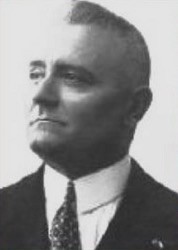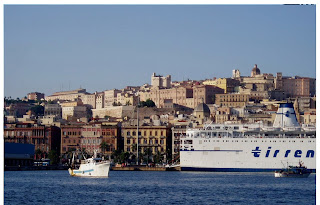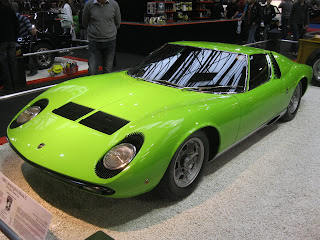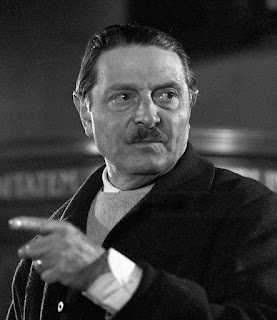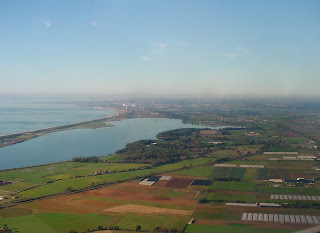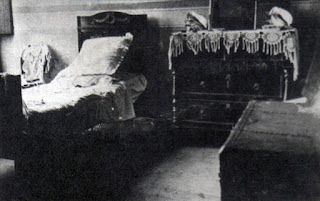Oscar-winning maestro behind 1948 classic Bicycle Thieves
 |
| Vittorio De Sica was one of the major figures of Italian neorealism |
Vittorio De Sica, the director whose 1948 film Bicycle
Thieves is regarded still as one of the greatest movies of all time, was born
on this day in 1901 in Sora in Lazio.
Bicycle Thieves, a story set in the poverty of post-War
Rome, was a masterpiece of Italian neorealism, the genre of which the major
figures, in addition to De Sica, were Luchino Visconti, Roberto Rossellini and
Giuseppe de Santis and, to a smaller degree, Federico Fellini.
The movie was one of four that landed Academy Awards for De
Sica. Another of his great neo-realist movies, Shoeshine (1948), won an
honorary Oscar, while Bicycle Thieves won a special award as an outstanding foreign
language film in the days before the Best Foreign Language Film category was
introduced.
De Sica would later win Oscars in that section for Yesterday,
Today and Tomorrow (1963) – a comedy starring Sophia Loren and Marcello
Mastroianni – and The Garden of the Finzi-Continis (1970).
His Marriage Italian Style (1964), also starring Loren and
Mastroianni, also earned a nomination as Best Foreign Language Film and for
Loren as Best Actress. Loren did win Best Actress for her role in his 1961
movie La Ciociara, which was released outside Italy as Two Women.
 |
| Lamberto Maggiorani (left) and Enzo Staiola played father and son in De Sica's acclaimed Bicycle Thieves |
Born in Sora, which lies
between Rome and Naples in the area known as Ciociaria, De Sica essentially
grew up in Naples, to which his father, Umberto, who worked as a bank clerk
with Banca d’Italia, was transferred in 1905.
During the First World War, De Sica had his first taste of
the entertainment business when he joined a musical group that performed in
military hospitals in Naples. He is said to have had an excellent singing
voice.
He began acting in the 1920s and became something of a
matinee idol on the stage. This was to lead to movie roles, mainly in light
comedies. De Sica was box office for a while, chosen to star opposite female
headliners such as Loren and Gina Lollobrigida.
When he turned to directing, he began with movies in a
similarly frothy vein. So he took audiences and the critics by surprise with
his fourth film, The Children Are Watching Us, released in 1944. An
extraordinarily sensitive story about a child whose mother elopes with another
man, leaving his father distraught, the film was the first product of De Sica’s
collaboration with the screenwriter Cesare Zavattini.
Zavattini, a former law student, began to write screenplays
when his employer, Angelo Rizzoli, moved from publishing books and magazines
into producing films. He and De Sica
would work together on Shoeshine, Bicycle Thieves, Miracle in Milan (1951),
which won a Palme D’Or at the Cannes Film Festival, and Umberto D (1952).
 |
| Yesterday, Today and Tomorrow won the third of De Sica's four Academy Awards |
Umberto D, a bleak study of the problems of old age, was a
box-office flop, so much so that film historians saw it as the beginning of the
end for neo-realism. Indeed, it prompted De Sica to return to lighter work.
Nonetheless, he continued to collect awards and after some
commentators had written him off as past his peak he sprang another surprise
with The Garden of the Finzi-Continis, based on a novel by Giorgio
Bassani about the plight of Jews in Italy under Fascism, which won him another
Oscar for Best Foreign Language Film and a Golden Bear at the Berlin
International Film Festival.
A compulsive gambler, De Sica often lost large sums of money and
accepted work he might otherwise have turned down in order to settle
debts. He was married twice, first to
the actress Giuditta Rissone, who bore him a daughter, and later to the Spanish
actress Maria Mercader, with whom he had two sons.
His personal life was complicated, however. He made a pact
with his first wife to maintain the pretence of marriage while their daughter
was growing up and at Christmas would turn the clocks back two hours in his
second wife’s house so he could celebrate with both families, one after the
other.
De Sica was a member of the Italian Communist Party, and it
was the cause of some discomfort to him that his relationship with Maria
Mercader created an unwelcome link with Ramon Mercader, her brother, who was a
Spanish communist but at the same time an agent for the Soviet secret police,
on whose behalf he carried out the assassination of the Bolshevik revolutionary
Leon Trotsky in Mexico in 1940.
 |
| Sora sits alongside the Liri river against the backdrop of the Apennine mountains |
Travel tip:
Built on a plain alongside the Liri river, in the shadow of
the Monti Ernici range in the Apennines, the town of Sora can be found about
25km east of Frosinone in Lazio, about 120m south-east of Rome and 140km north of Naples,
close to the border with Abruzzo. A settlement since the fourth century BC,
when it was occupied by the Volsci tribe, it has been at various times under
the rule of Rome and Naples. It lies at
the heart of the Ciociaria, an area renowned for its cuisine and colourful and
elaborate peasant costumes. Today its economy is a mix of industry and
agriculture. It is a pleasant town with some pretty squares, including Piazza
Santa Restituta, which sits in front of the church of the same name, just off
Lungoliri Mazzini. On rocks above the town there are the remains of a walled
fortification that dates back to the Volsci period.
 |
| The Toledo Metro station in Naples |
Travel tip:
The Banca d’Italia building in Naples is in a fairly
nondescript street linking Via Medina with Via Toledo, not on the tourist
trail. Yet within a few metres is one of the city’s more unlikely must-see
places, the Metro station Toledo. It is one of a number of so-called ‘art
stations’ on the line linking Piazza Garibaldi and Piscinola. Toledo is famous
for its breathtaking escalator descent through a vast mosaic by the Spanish
architect Oscar Tusquets Blanca known as the Crater de Luz – the crater of
light – which creates the impression of daylight streaming into a volcanic
crater.
